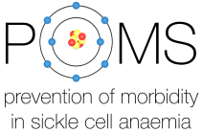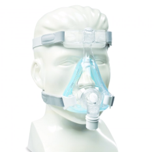Prevention Of Morbidity In Sickle Cell Anaemia
Several SCA complications, including pain, cardiac dysfunction, stroke and silent brain damage visible on MRI appear to be associated with low daytime and night‐time oxygen levels
There is preliminary evidence from a randomised pilot trial (POMS1) that a treatment for sleep disordered breathing, auto‐ adjusting Continuous Positive Airways Pressure (APAP), is feasible and may be useful in children with Sickle Cell Anaemia, with improvement in attention span and pain episodes.
The POMS study aims to further investigate whether 6 months of A-PAP treatment improves complications of sickle cell anaemia in a larger sample of children and adult patients.
Children (8-16 years) and adults (>16 years) with sickle cell disease are eligible to take part
Participants will be randomly assigned to receive A-PAP treatment or standard care and involves two home visits and four hospital visits. The home visits involved A-PAP machine set-up and filling in some questionnaires. The hospital visits involved blood and urine tests, and oxygen-level measurements. Two of the hospital visits also involved brain and heart MRI scans, and cognitive testing.



 Close
Close

